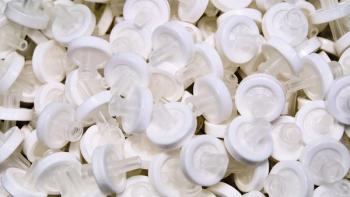
- BioPharm International, September 2021 Issue
- Volume 34
- Issue 9
Process Chromatography Makes Steady Progress
Process chromatography in downstream processing has seen steady improvements over the years, but there is still room for improvement.
As the biopharmaceutical market grows, the need for cost- and time-efficient processes also intensifies. An area that has potential for further optimization and increased efficiency is that of process chromatography in downstream processing (DSP).
According to a market report, the global downstream processing market is expected to grow at an annual compound rate of 15.9% between 2021 and 2028 (1). A dominant segment for the market is chromatography systems, which, through continuous research and development and a rise in the number of deals pertaining to chromatography systems, is anticipated to expand further (1).
To find out more about the changes, challenges, innovations, and opportunities in process chromatography for DSP, BioPharm International spoke with Jungmin Oh, manager, New Product Development from Avantor, and Elliot Haimes, Field Application Specialist, Sartorius Stedim Biotech.
A maturing process
BioPharm: What have been the biggest changes over recent years to process chromatography in DSP of biopharmaceuticals?
Oh (Avantor): Monoclonal antibody (mAb) chromatography steps have been optimized over the past 30 years, and as such, a need for differentiated resins is increasing. Many of those novel biologics do not have established chromatography processes, and do not have the appropriate resins available. This is a significant market opportunity for innovation. Process chromatography has seen steady improvements in recent years to offer better throughput, productivity, and separation efficiency. The separation efficiency improvements are driven using new multi-mode/mixed-mode ligands and resin technologies. The biggest change is new, tailored affinity ligands that significantly improve resin stability and selectivity. These tailored ligands-based resins can be used for many different modalities such as bi-specific antibodies, antibody fragments, viral vectors, and nucleic acid development.
Haimes (Sartorius): DSP has undergone several changes in recent years as the industry continues to mature. To address the cost and complexities of equipment cleaning validations, there has been a shift from multi-use to single-use processing. The adoption of convective chromatography media, connected and intensified processing, and the automation of high-throughput screening and development has made processes more productive by reducing media needs and time costs. As custom ligand availability and adoption has grown, vendors are now supplying more affinity ligands. Lastly, chromatography media, overall, has advanced to offer higher binding capacity, better pressure-flow, more robust cleanability, and greater selectivity.
Performance challenges
BioPharm: What are the most significant challenges faced when performing process chromatography in DSP?
Haimes (Sartorius): Customers continue to face significant challenges when performing chromatography in DSP. Of course, the cost of consumables is always a concern—specific examples include chromatography resins (especially affinity) and flow kits for single-use chromatography skids. Manufacturers are also concerned about the consistency and security of supply for raw materials/vendor products that many industries are now facing. Further, while manufacturers are adopting new technologies, such as single-use chromatography systems or convective devices, these new products must be scalable to meet customer demands. Next, emerging modalities, such as gene therapies, lack a strong platform purification approach. With these molecules, and also more traditional biologics, there is a need for real time (in-line) or on-line analytics. Finally, the industry is also facing issues with buffer management in existing facilities, as well as the physical and automation connections between equipment and systems.
Oh (Avantor): As upstream processing increases, the downstream efficiency becomes more important to ensure stability of biomolecules during the increased processing time. The process time not only affects the quality of the biomolecule, but also affects the costs to the process, like labor. It also limits the floor capacity especially for multiproduct facilities. To achieve a high output upstream process as well as an equally efficient downstream process, both processes required an extraordinarily high quality of raw material for smooth day-to-day operation. This balance may be challenging to manage, but it is possible with improving productivity of chromatography steps through resin and buffer selection. As the resin capacity can dictate the overall process throughput significantly, the use of protein A resin with higher capacity (>65 mg/mL), such as the J.T.Baker BAKERBOND PROchievA recombinant protein A resin can reduce the process time by decreasing the number of column cycles. Based on the calculated simulation for 2000 L reactor with 5 g/L titer process, using a higher capacity protein A resin can save up to 44% of process cycle compared to traditional protein A resins with lower dynamic binding capacity of [approximately] 30 mg/mL.
Advancement efforts
BioPharm: Could you highlight any specific innovations or technologies that have advanced process chromatography in DSP significantly?
Oh (Avantor): Over the years, technology rooted in process analytics has been integrated with chromatographic unit operations to streamline and automate the process. Significant efforts have been made to develop and demonstrate continuous chromatographic processes. On one hand, continuous chromatography through use of multi-columns or countercurrent processes can increase the process throughput significantly by reducing operating time and enabling the use of a resin more efficiently. However, there are challenges related to adopting continuous chromatography in commercial batches due to operational complexity and the uncertainties of regulatory requirements. On the other hand, in-line dilution for buffer preparation is relatively easier to adopt to commercial-scale productions. Certain buffers are commonly used in multiple chromatography process such as cleaning solutions. In those cases, high-concentrated buffers can be sourced to reduce warehouse space and handling volume as well as free up floor space for multi-product facilities where it can be used for more critical processes.
Haimes (Sartorius): Significant considerations include enhancing the productivity of customers’ processes as well as meeting the demands of newer molecules that are more challenging to purify. Some examples of innovations that are advancing process chromatography include radial chromatography for the clarification and direct capture of high cell density feed streams, as well as the use of monolithic technology for gene therapy product development, including viral vector-based vaccines, messenger RNA (mRNA), exosomes, and so on. Additionally, multi-column chromatography (MCC) and rapid-cycling chromatography (RCC) are disruptive technologies that allow users to remove bottlenecks at their capture step while maintaining their existing process design. Lastly, in-line conditioning and dilution from buffer concentrates reduce the buffer management bottleneck in DSP.
Areas of improvement
BioPharm: Are there any areas within process chromatography in DSP that you believe could benefit from increased research and development?
Haimes (Sartorius): Increased research and development can surely benefit DSP by enhancing the existing process chromatography ‘toolbox’. For example, manufacturers desire higher-specificity ligands and/or custom ligands for emerging modalities. For example, no good solution exists yet for lentivirus purification. The industry needs robust platforms for new modalities such as adeno associated virus, mRNA, plasmid DNA, and exosomes, to name a few. There is also room for improvement in the optimization of existing affinity ligands to enable higher binding capacities and accommodate increased product titers. As previously mentioned, on-line or in-line process characterization can be significantly improved. Currently this characterization is highly reliant upon a UV signal. The industry can benefit from chromatography systems with more process analytical technology (PAT) capabilities to aid in product and process impurity monitoring. While there are high-throughput automated PD systems, these need to be fully connected to high-throughput analytical systems to realize their maximum value and utility.
Oh (Avantor): Purification of complex biomolecules, such as bispecific antibodies and viral vectors, can present significant challenges due to limited availability of resins that can provide the appropriate specificity along with the right stability and usability. Additional research and development of novel purification approaches using tailored resins could improve these processes.
Future trends
BioPharm: What are your predictions for the future of process chromatography in DSP in the next decade?
Oh (Avantor): The future of process chromatography will likely bring wider use of multimode ion exchange resins and adoption of continuous chromatography processes. Biotherapeutic molecules are evolving at a fast pace, and often affinity purification won’t be available in the early phase. In addition, standard purification platforms may not sufficiently separate impurities that are in similar properties as target molecule. Separation of empty and full capsid is an example where higher resolution is required for advanced therapies, but multimode resins can be used in the capture, intermediate, or polishing steps depending on the process. Novel biologics from non-traditional expression systems, or molecules that are difficult to purify, will require the types of products that can offer a wide portfolio of multimode resins (both strong and weak anion exchange and cation exchange chromatography) that can be used at relatively higher conductivity, such as J.T.Baker BAKERBOND resins, for example.
Haimes (Sartorius): In the short-term, a higher adoption of convective media for flow-through polishing steps and capture steps for new modalities, more advancements in ligand chemistries to offer higher selectivity and more flexibility in process design, and a shift towards ready-to-use (plug-and-play) chromatography media are expected trends. In the intermediate time frame, as cell lines become more efficient in generating high quality, low impurity products, some predict a shift from a three-step chromatography process to a two- or even single-step process (just for affinity driven by multicolumn chromatography [MCC] or rapid cycling chromatography [RCC] approaches). Similarly, we should see greater adoption of process intensification, which will include MCC, RCC, in-line buffer dilution, membrane adsorbers, and connected operations. The long-term goal for the industry is to adopt in-line PAT for real-time release.
Reference
Grand View Research, Downstream Processing Market Size, Share and Trends Analysis Report by Product (Chromatography Systems, Filters), by Technique (Purification, Formulation), by Application, by Region, and Segment Forecasts, 2021–2028, Market Report (February 2021).
About the author
Felicity Thomas is European Editor for BioPharm International.
Article Details
BioPharm International
Vol. 34, No. 9
September 2021
Pages: 24–27
Citation
When referring to this article, please cite it as F.Thomas, “Process Chromatography Makes Steady Progress,” BioPharm International, 34(9) 2021.
Articles in this issue
over 4 years ago
Setting a Clear Strategy for Primary Packagingover 4 years ago
Bioprocessing Innovations Pose New Challenges for Fermentationover 4 years ago
Reevaluating Cell and Gene Therapy Developmentover 4 years ago
Using Digital Twins to Model Process Chromatographyover 4 years ago
Opportunities for Digital Twinsover 4 years ago
How Pure is Pure? Understanding Reagent Purity Gradesover 4 years ago
The Impact of Insufficient Oversightover 4 years ago
In Vitro Pulls Ahead of In Vivo for Adventitious Agent Testingover 4 years ago
Trends Affecting Biopharmaceutical ManufacturingNewsletter
Stay at the forefront of biopharmaceutical innovation—subscribe to BioPharm International for expert insights on drug development, manufacturing, compliance, and more.




